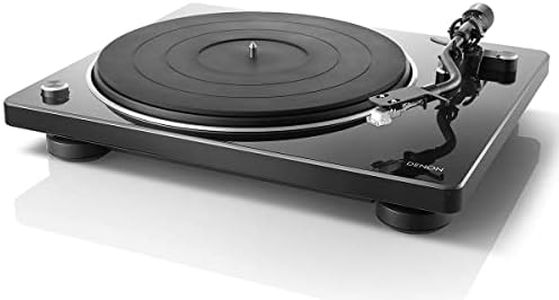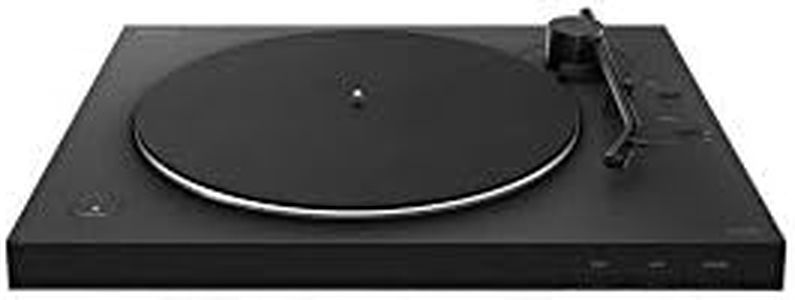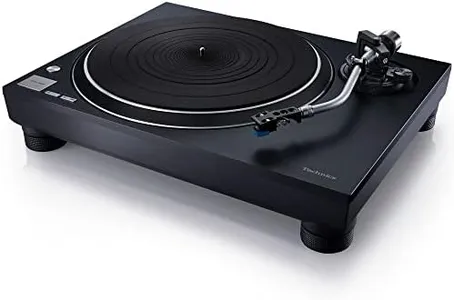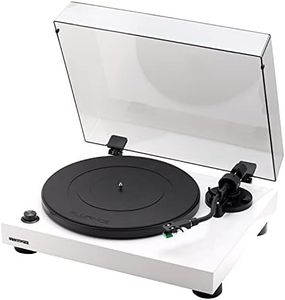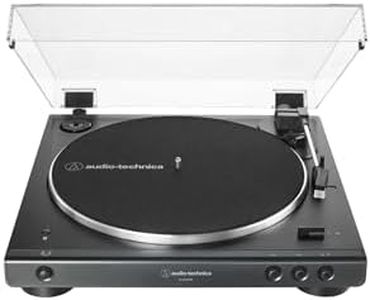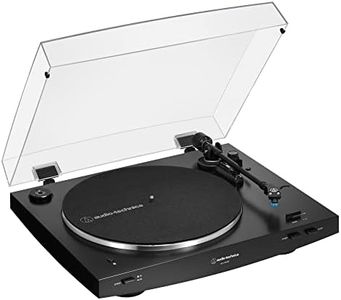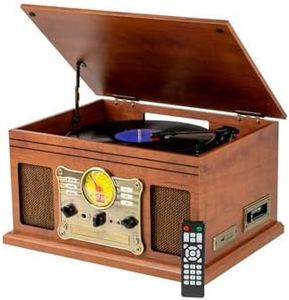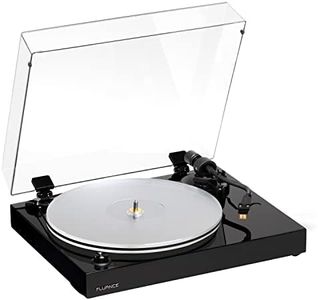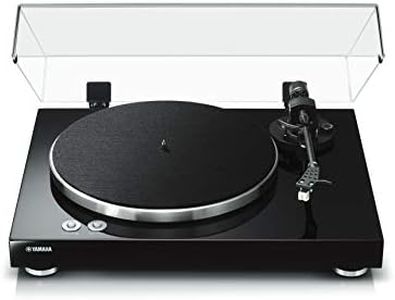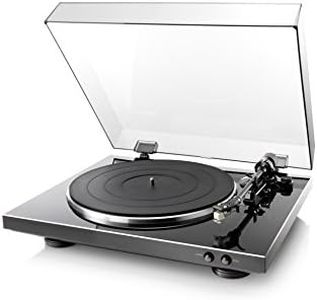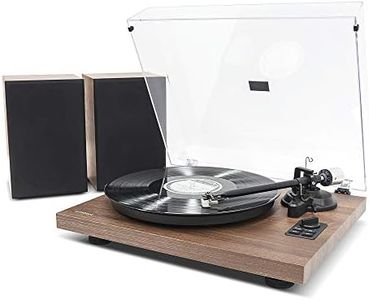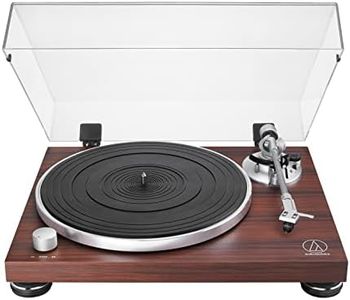We Use CookiesWe use cookies to enhance the security, performance,
functionality and for analytical and promotional activities. By continuing to browse this site you
are agreeing to our privacy policy
10 Best Phonograph Players
From leading brands and best sellers available on the web.#9
mbeat
11%OFF
MB-PT-28 Bluetooth Hi-Fi Vinyl Turntable Record Player with 36W Bookshelf Speakers, Supports 33/45 RPM Vinyl Record, Bluetooth Streaming via Smart Devices, Pre-installed Hi Fidelity MMC Stylus, Solid Metal Platter, Removable Dust Cover and Adjustable Counterweight and Anti-skating weight, Including Feature-Rich Audio Outputs, Line-in Pre-amplifier, USB Recording Function
Buying Guide for the Best Phonograph Players
Choosing a phonograph player, whether you call it a record player or turntable, is an enjoyable journey into the world of analog music. The right pick depends on your needs, interests, and the kind of listening experience you want. Some people want high-fidelity sound for serious listening, while others want a more casual or vintage vibe. Understanding a few key specifications will help you narrow down your options and find the best player for your records and setup.Drive TypeThe drive type refers to how the platter—the part that spins the record—is powered. The two main types are belt-drive and direct-drive. Belt-drive systems use an elastic belt to connect the motor to the platter, which can help reduce vibrations and often appeals to audiophiles interested in pure sound quality. Direct-drive turntables have the motor directly connected to the platter, providing more torque and instant start/stop, popular with DJs and those wanting something simpler to maintain. If you are a serious music listener focused on sound quality, belt-drive may suit you best; for general purpose, durability, or DJ-style use, direct-drive is a solid choice.
Speeds SupportedSpeeds supported indicate which types of records the player can handle—usually 33 1/3, 45, and sometimes 78 revolutions per minute (RPM). Most modern records are 33 1/3 or 45 RPM, while older or specialty records may use 78 RPM. If your collection is mostly standard new releases, having 33 1/3 and 45 RPM is enough, but if you collect vintage or rare records, look for support for all three speeds. Your record collection or plans to explore vintage finds should guide your choice here.
Cartridge and Stylus TypeThe cartridge and stylus are the parts that read the record grooves and translate them into sound. There are different types, like moving magnet (MM) and moving coil (MC), each with performance differences. Many players come with a cartridge pre-installed, but some allow upgrades or require you to install your own. If you want to customize your sound or upgrade over time, choose a player that allows easy cartridge changes; casual listeners may be content with a built-in option.
Built-in PreampA built-in preamp means the phonograph player can send audio directly to powered speakers or any audio system without needing a separate preamp. Without this, you'll need an external preamp or a receiver with a 'phono' input. If you want a straightforward setup, look for a model with a built-in preamp, but if you have higher-end audio gear, you might prefer to handle the amplification separately for better sound control.
Manual vs. Automatic OperationThis refers to how much of the playing process is handled for you. With manual players, you must lift the tonearm onto and off the record yourself; semi-automatic may lift off automatically at the end; fully automatic controls both the start and stop. Manual turntables offer more control and are often preferred by audiophiles, while automatic options are user-friendly and convenient for beginners or those wanting effortless play.
Build Quality and IsolationBuild quality affects both durability and sound. Heavier, sturdy turntables with good isolation can minimize vibrations, leading to clearer playback. Lightweight, plastic builds may be more affordable but can pick up more unwanted noise. If sound quality is important or your environment is prone to vibration, choose a more robust player—otherwise, a simpler build may suffice for casual listening.
Connectivity OptionsModern phonograph players may offer additional outputs like USB for digitizing records or Bluetooth for wireless speakers. Some stick with classic analog outputs. If you want to archive your vinyl to digital files or play music wirelessly, look for these modern connections; if you prefer traditional listening setups, standard outputs will do.
